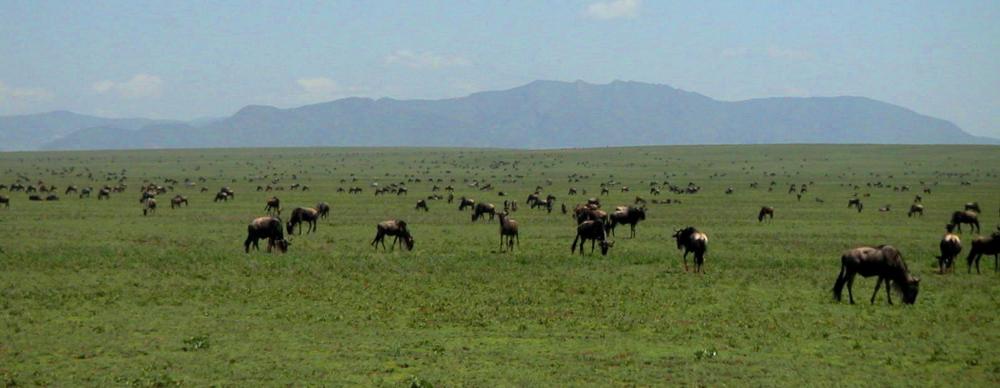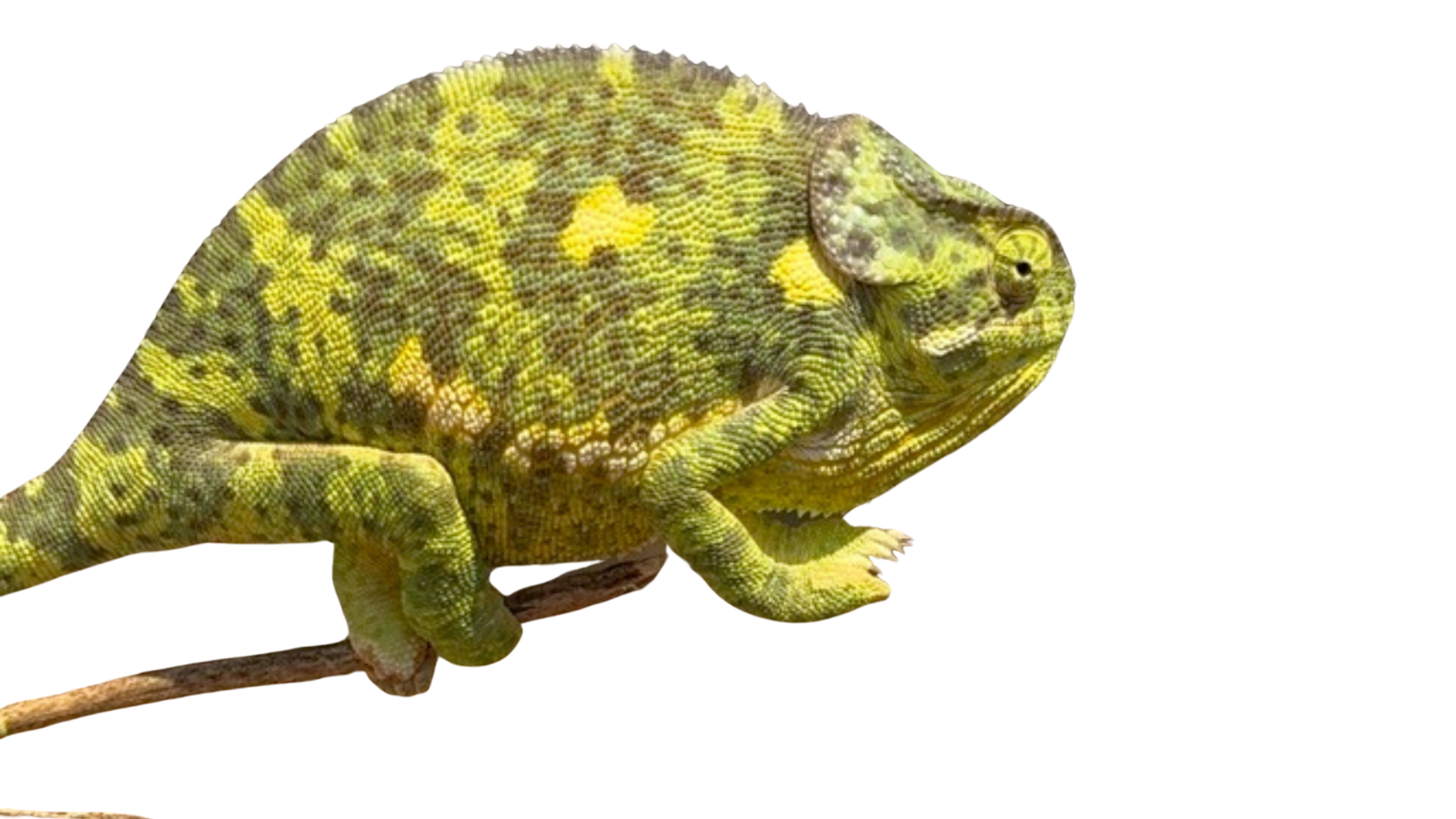Modern problems are the result of complex ideas. The solutions to modern problems will come largely from simple ideas. I was in middle school when I came across the simple idea, forwarded mostly by Allan Savory, that we can solve several problems at once by mimicking the way native grazing animals impact the landscape. I’m not sure if this idea was too complex or too simplistic. But in the two decades since, I am embarrassed at how little effort I have put into finding out what “mimicking the way native grazing animals impact the landscape” actually means. What the evidence shows. In the real world. I think the eco-grazing movement has been sleepwalking on a similar trajectory.
To start to rectify this situation we are going to spend a few weeks investigating the ancient relationship between grass and grazing animals by investigating an ancient (by journal article standards) paper by SJ McNaughton. We will look at this dynamic by following the herds on their migration, starting in the shortgrass plains in the southern part of the ecosystem where the herds spend the rainy season.
But first, we should spend a little time (hopefully very little) looking at what actually happened here on the ranch this week. In the Almanac section of this blog, I promise to not wax philosophical and to not think big picture, rather just tell you what is going on here. And I promise to cheat less than 90% of the time. Hazel-the-pup went into heat and disappeared overnight on Wednesday. Thank you to Carrie-the-dogsitter, and apparently favorite auntie, for finding her. We received many heartfelt condolences from all of you when this pretty little girl disappeared. I should only hope to be so lucky. As a result, Hazel spent Wednesday night in the house which is a real treat, as the nights are starting to get cool and wet. At 8:00 pm she was sprawled out on the biggest softest, warmest, cushion in the house. At 9:30 she was sitting in front of the door, whining, looking forlorn. That is the modern world in a nutshell.
Since we didn’t have Hazel, it was just Ava-the-pup and me moving cattle on Wednesday. We only had to move 29 head out of the east swamp. The 29 head that didn’t fit in the trucks last week. Smile. I walked. Ava decided she would walk too. It usually isn’t straightforward getting them out of the east swamp. But it was just 29 head and it was pretty easy. That pasture is starting to transition from swamp to ‘grazing lawn’ (more on that too come), but it was looking a little tired. We moved them out the gate and through the lanes, into the next pasture, to the opposite side of the ranch. When we were all done, I got to spend a few minutes just sitting there watching them graze. We irrigated that pasture probably six weeks ago, and last grazed it three weeks ago. It was short and barely had three dark green leaves. Perfect. This is not an epic or heroic movement of millions of animals across vast landscapes in a cycle that has repeated itself for millions of years without interruption. But, you know what? It’s enough. That is the solution to the modern world in a nutshell.
So, back to our academic subject, and none-too-soon. Last week we talked mostly about how the grazing herds in the Serengeti impact grass production. Those herds mostly create huge increases in production. But when grazing starts to resemble ‘no grazing,’ when grazers don’t arrive until the grass is already very tall, grazing’s ability to stimulate grass production trails off until it lands close to zero. The short grass plains are a good place to look at this trend because this is where most of the green season grazing occurs. So, lets daydream up a plain stretching toward distant mountains, grass very short and very green, covered by tens of thousands of wildebeest and zebra.

Wow, that’s good daydreaming. You must have done this before.
As I reported last week, grazing, on average, boosted grass production 2X in the Serengeti. As a manager, one of the more interesting things to come of this was McNaughton’s statement that maximum stimulation came when residuals from the grazed plots were about 50% of production in ungrazed plots. Maybe it was a similar observation that caused the old-timers to talk about ‘taking half and leaving half.’ However, it should be noted that because grazing stimulates grass production, if you end up with 50% of the material at the end of the season you have taken much more than 50%. Probably closer to 75%, though McNaughton does not report that number, unfortunately. As managers of rotational grazing operations, this would mean that if the grass was short and green, following the spirit instead of the letter of the ‘take half leave half rule’ would mean that we take around 75% in any given rotation. I would be interested to hear Chad Peterson’s thoughts on this one as I know he has been a vocal opponent of the ‘take half leave half’ idea. But no matter what anyone says, I can’t imagine ‘leaving half’ around here in Oregon. Way too much. I suspect this is an artifact of almost all the green season grazing happening on very dry grasslands in the Serengeti.
McNaughton’s take on grazing on these beautiful wet season ranges was that the herds were more or less continuously grazing. That’s kind of how it looks in the above picture but it could be hard to tell. With grass that short, that might actually be high density on a daily move sort of level. Or maybe the grass is growing so fast that it can
But one of the more useful things that McNaughton does in this paper is walk-through how the grazing played out in the real world on one of his plots. What resulted was a sort of grazing case study. I wish he would have done this for every single plot. In fact, if there are any budding range ecologists out there looking for something to study, if I had a five hundred page book full of nothing but Serengeti grazing case studies, I would read that book from cover to cover. Then start back over at the beginning, again and again, like the great migrations themselves. I will include it here because it happens during the green season, but the site was on the herds dry season range.
So now we are zooming in on that herd of wildebeest and zebra to get a closer look at what is actually happening. In the plot I mentioned above, wildebeest arrive in a homogenous sward of grass and within a few hours remove 1388 pounds of grass per acre, or 46 animal days/acre. (I am the one translating these into English units and ADA’s. So, no guarantees. And it should be noted that while the grass is green in this plot, this plot was grazed during the dry season and was in the taller grass region of the ecosystem, so the harvest totals will be higher than they would be in the short grass plains). This was 76% of the available feed. He doesn’t say how much rain it took to grow that much feed. McNaughton reported that the sward then looked very patchy after the wildebeest came through, with most of the remaining material concentrated in the ungrazed patches. Three days later a herd of zebras came and ate the clumps down so that he sward again had a homogenous look. This was 44% of what remained, 186 lbs to the acre, 6 ADAs. Over the next three weeks, the area gets a glorious 5 inches of rain. 21 days after the zebras left, the wildebeest circle back around and consume 350 lbs to the acre or 12 ADAs. This is about 50% of that regrowth. After that there was very little rain, everything dried up and the herds never returned.
In this little paragraph, there are so many insights. First, as I said before, the herds take a pretty substantial chunk of the grass in the first pass. But then the zebras. Zebras play an important role in the system. They are able to eat course grass that the ruminant animals are not able to consume. As we will see, zebras are the only animals in the Serengeti that consume large amounts of dry material or large amounts of grass stems. This is the thing that I am mimicking when I clip my pastures. If I could have a herd of horses or zebras than I wouldn’t have to do this and my stocking rate would automatically go way up.
I am telling you people, eat a horse. Or a zebra. Or a donkey. For nature. There are very few single things that would better increase the diversity of large mammals on our landscape or better mimic the impacts that diverse herds had on our ecosystem than for me to have a ready market for lots of large non-ruminants. Now I know this isn’t going to happen anytime soon. But as an independent thinker, I yearn for ways to poke eyes on both sides of the political spectrum. Equally. Those three simple words (‘eat a horse’) do that better than anything else I can come up with. Just doing my part to bring us together as a nation.
The last important point from this case study is that the herds came back as soon as there was a good amount of feed. They did not wait and they never came back after the grass stopped growing. To me as a manager this looks quite a bit different than continuous grazing and looks very similar to what I would do as a grazing manager firmly steeped in the idea of that good grazing is rotational grazing. Though, next week we will talk about the parts of the Serengeti ecosystem that are definitely grazed year round.
Somehow I have already managed to ramble on for way too long. I didn’t even get all the way through the wet season. Not sure how that happened, I think I only had one donkey-eating tangent. Anyway, I guess that is where we will start next week.
Once again the important point here is that we are looking at the Serengeti because we are trying to draw relevant lessons about grazing that we can use in our own operations. The Serengeti is the last place in the world where there is a reasonably complete migration of grazing animals, but everywhere in the world was once like that. If you manage a North American ranch, that land was once home to at least as many species of grazing animals as currently live in the Serengeti. If you had read my book you would have known that by now. So let’s all read that book so we can all be on that same proverbial page. But not yet! Because the book available on the website does not have illustrations. The big news that I keep going on about revolves around those illustrations.

